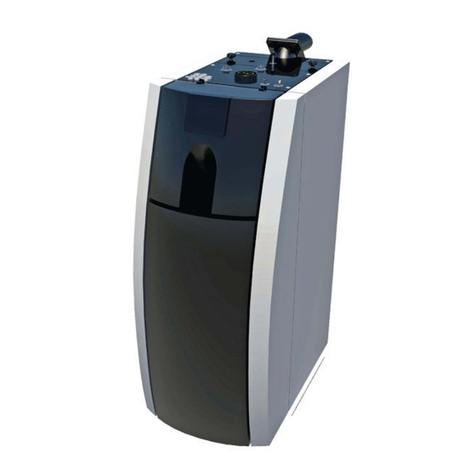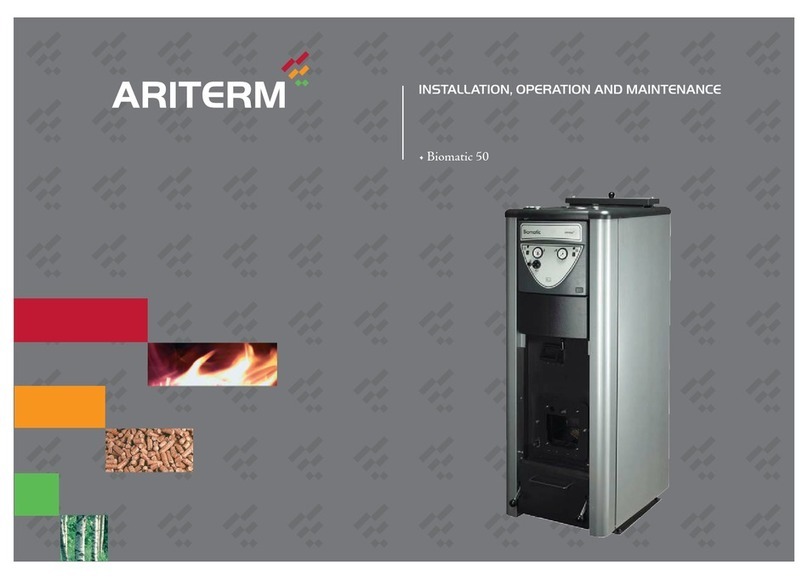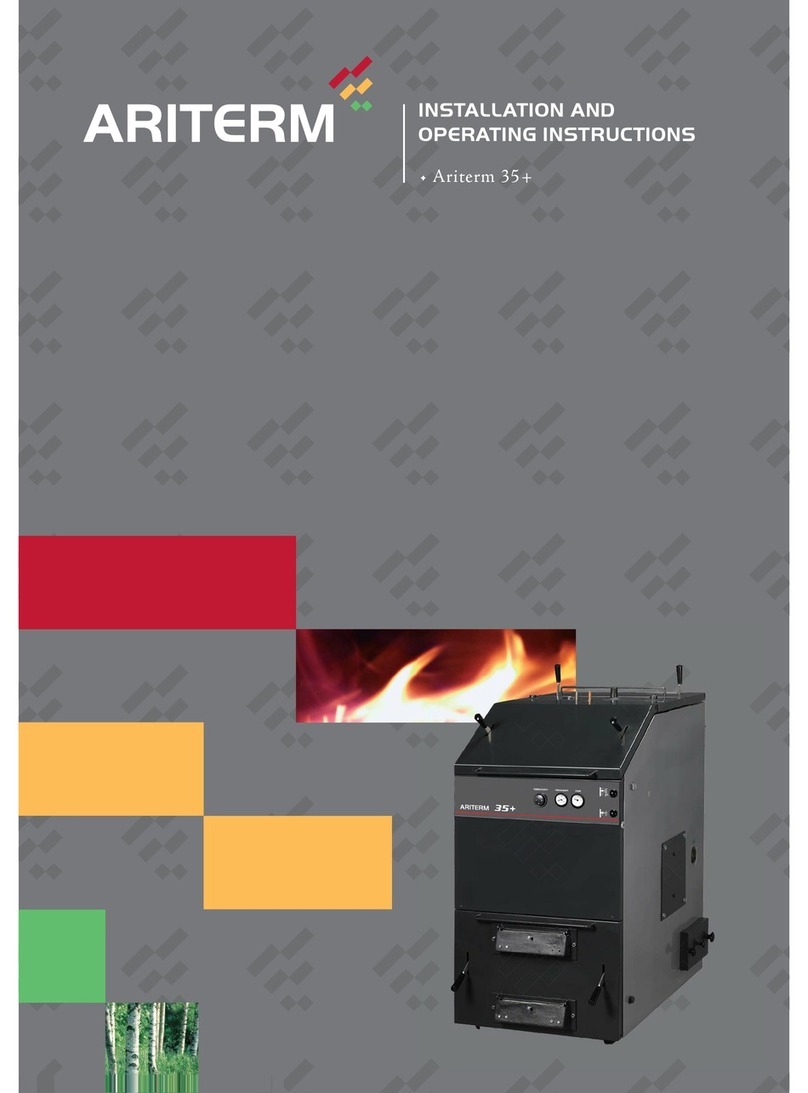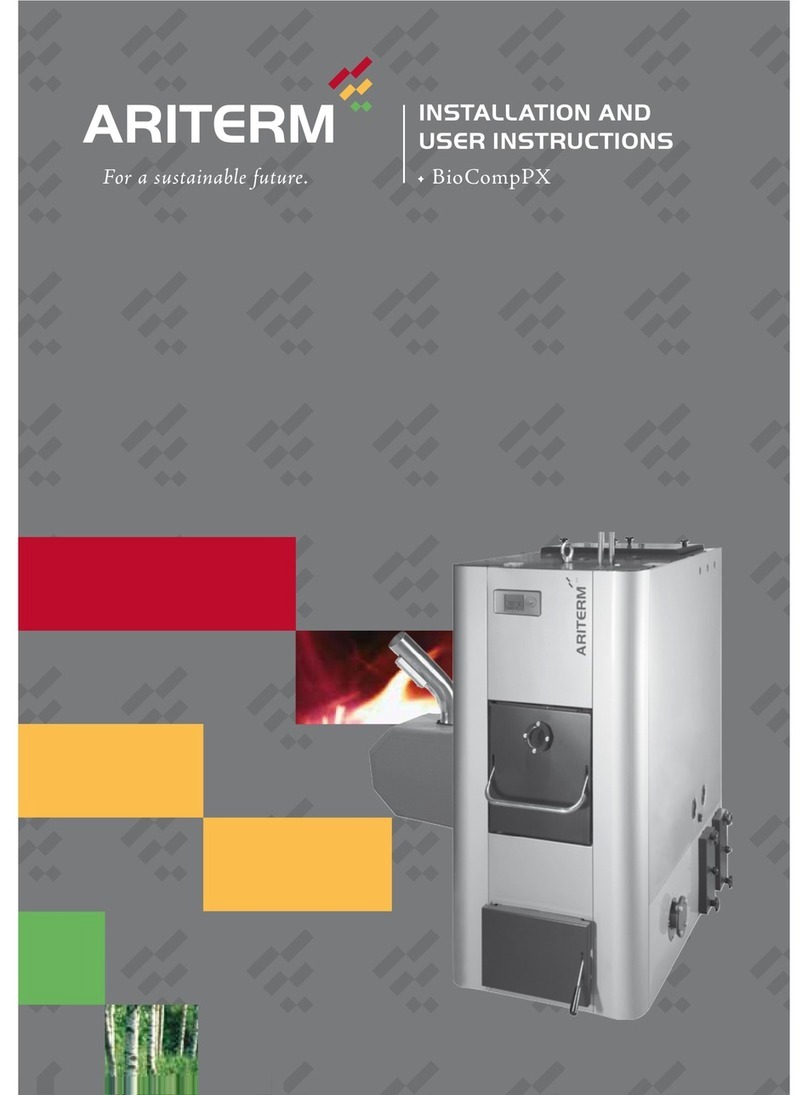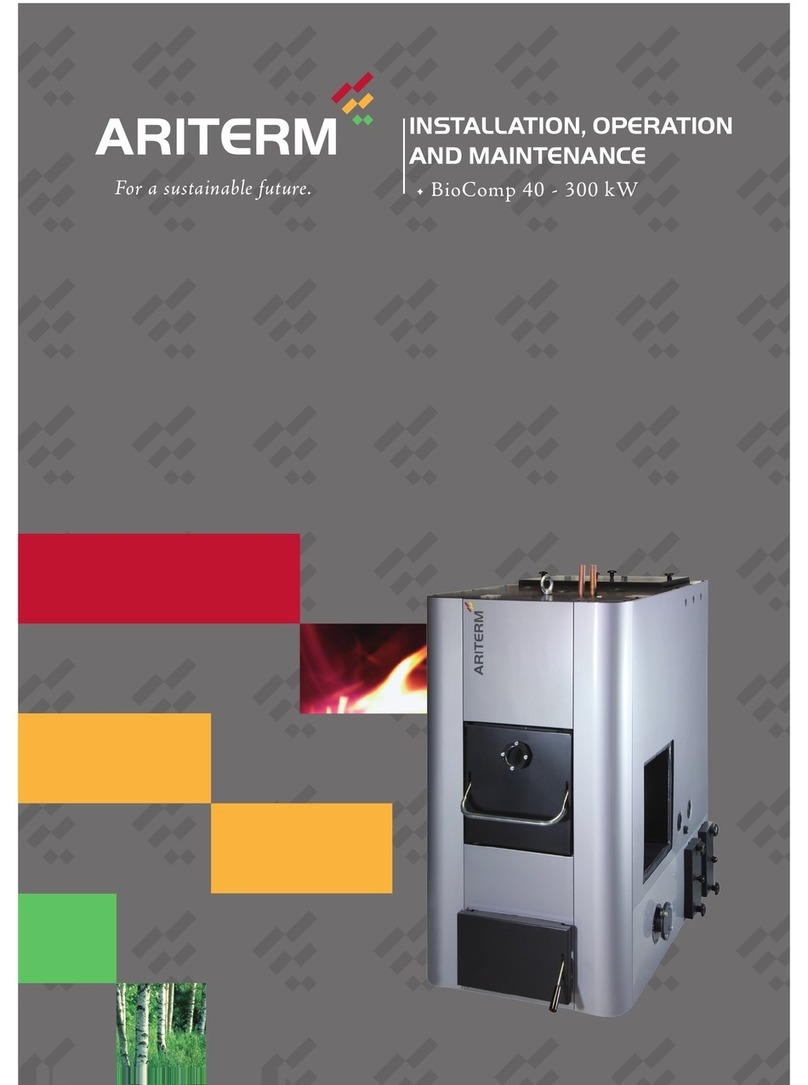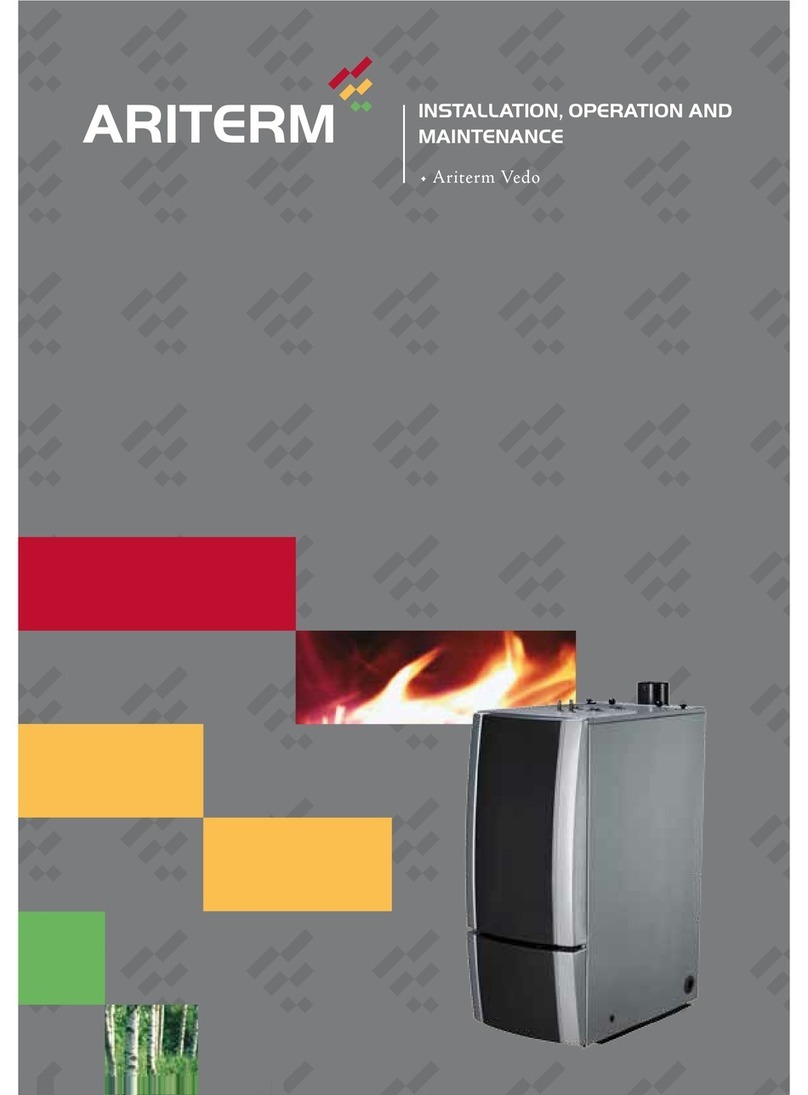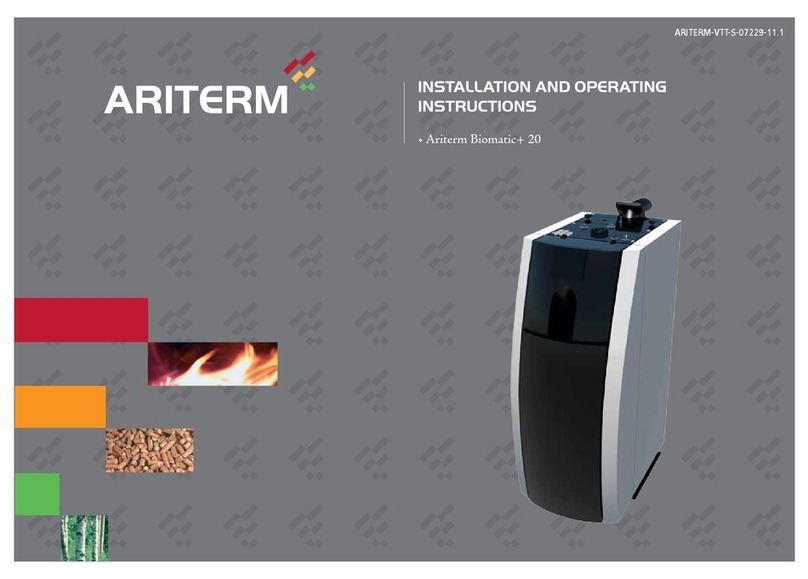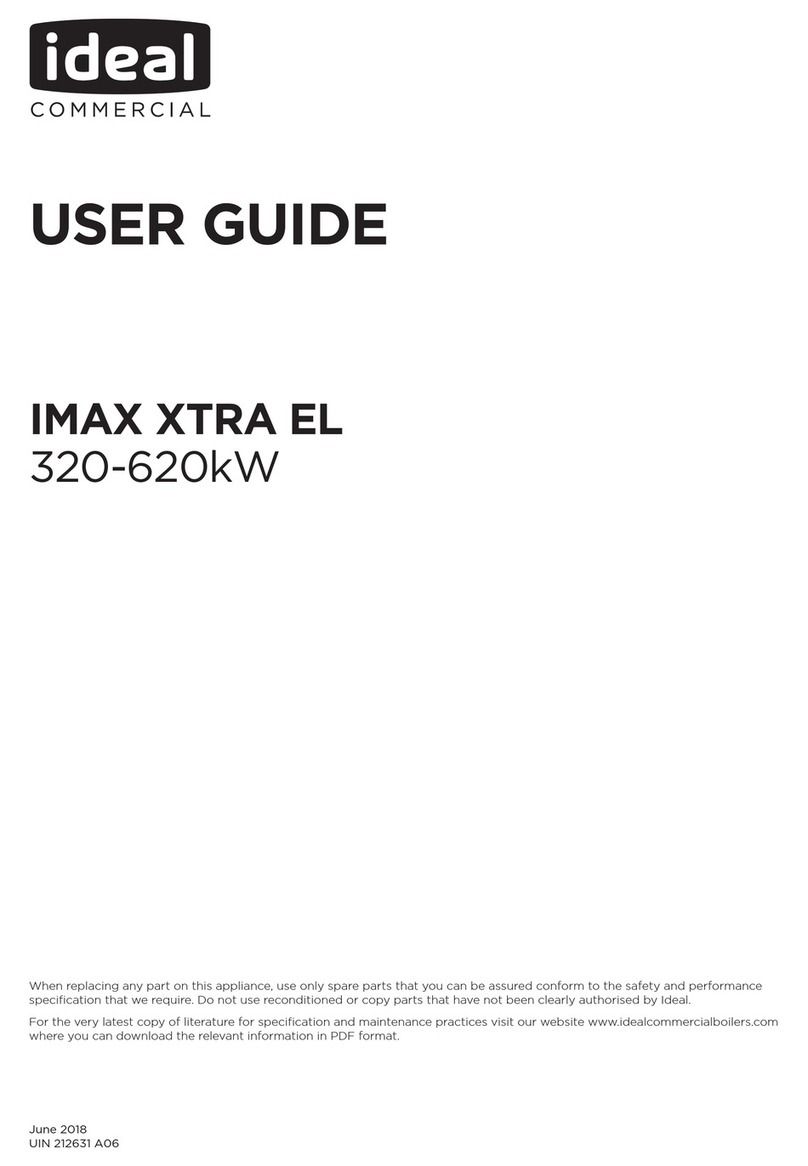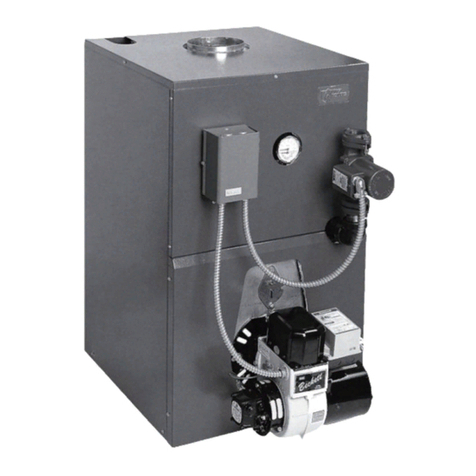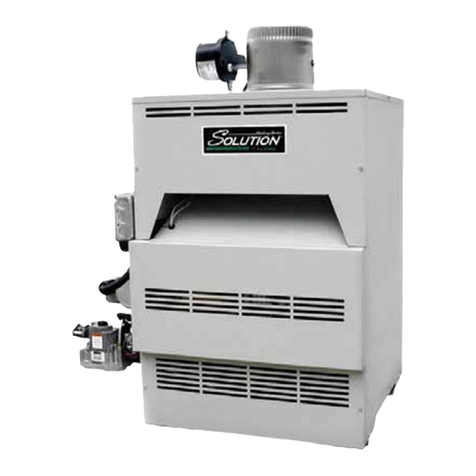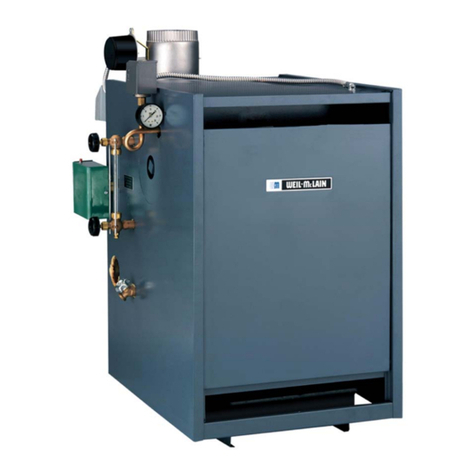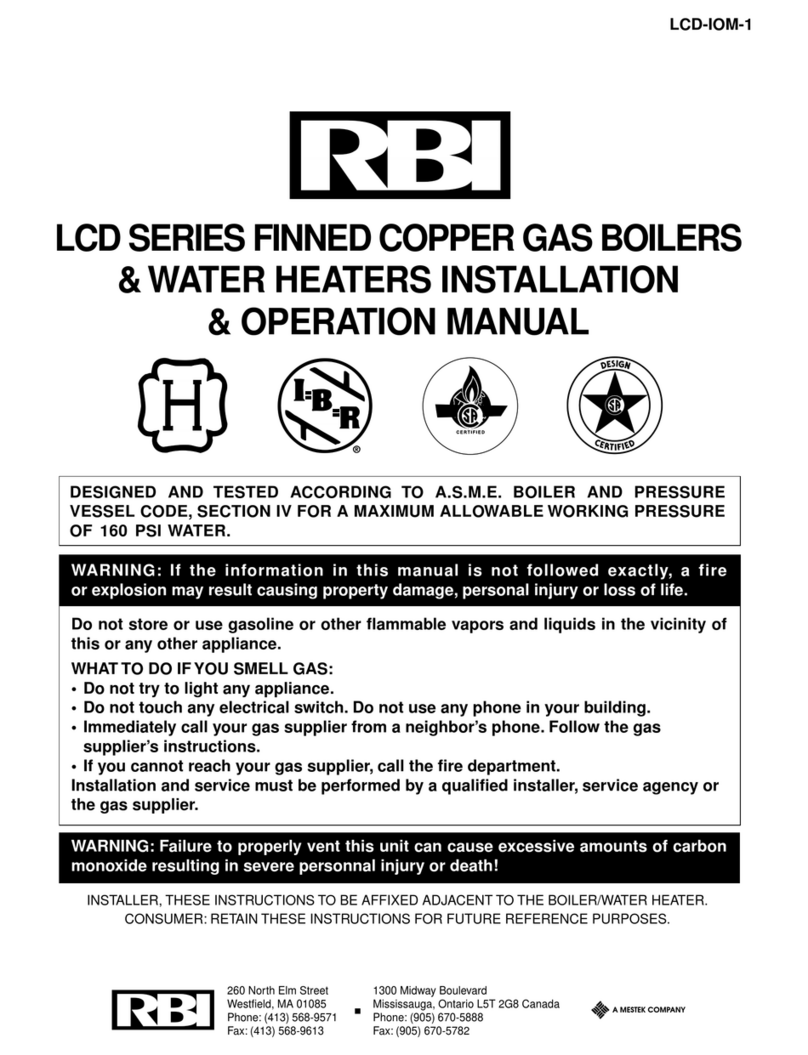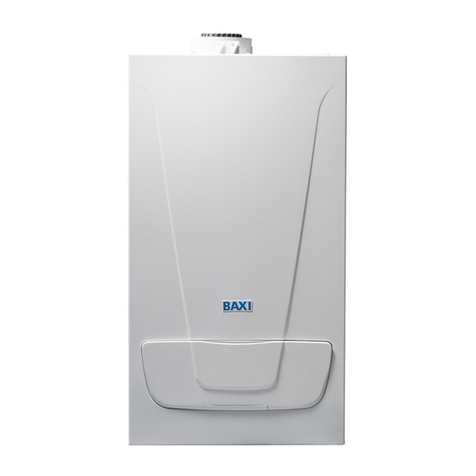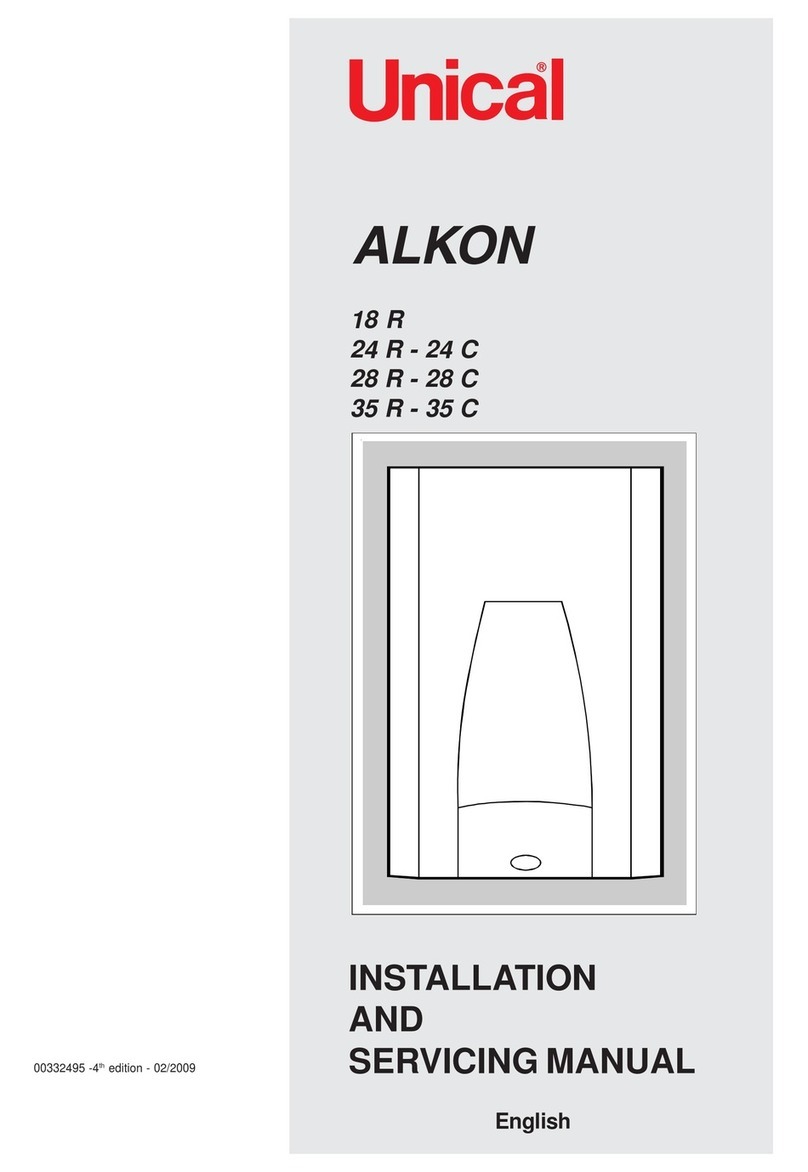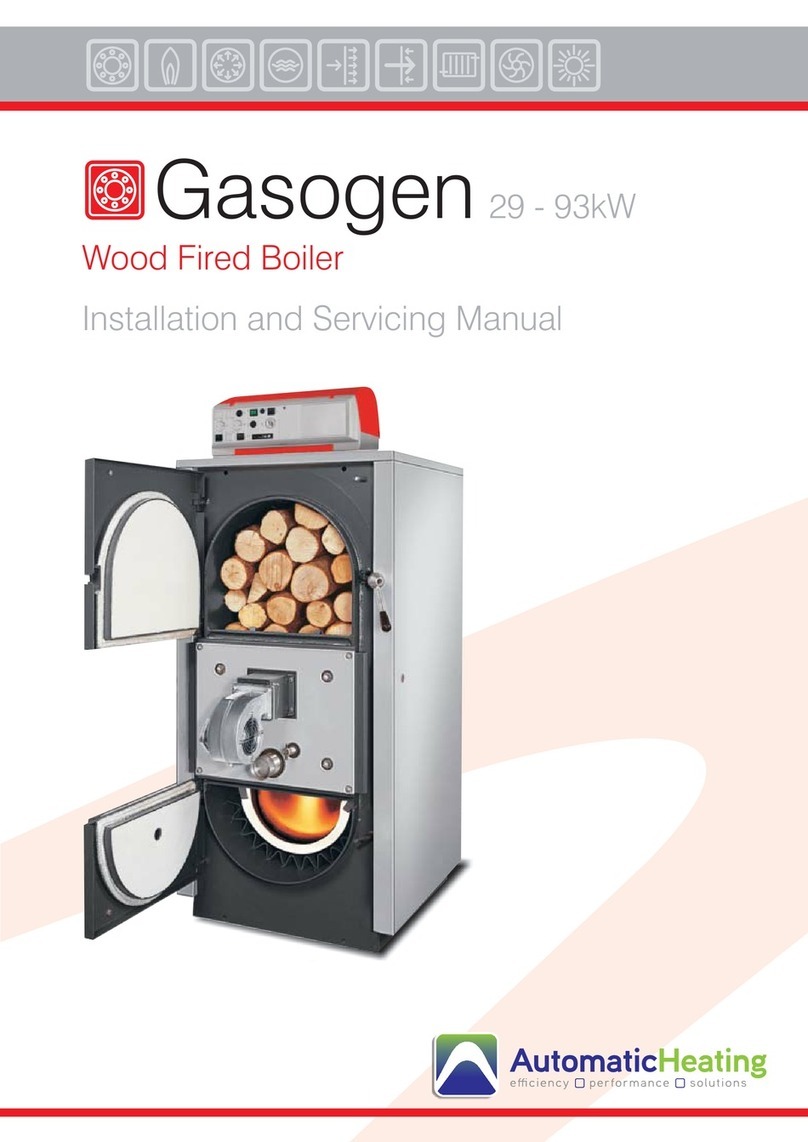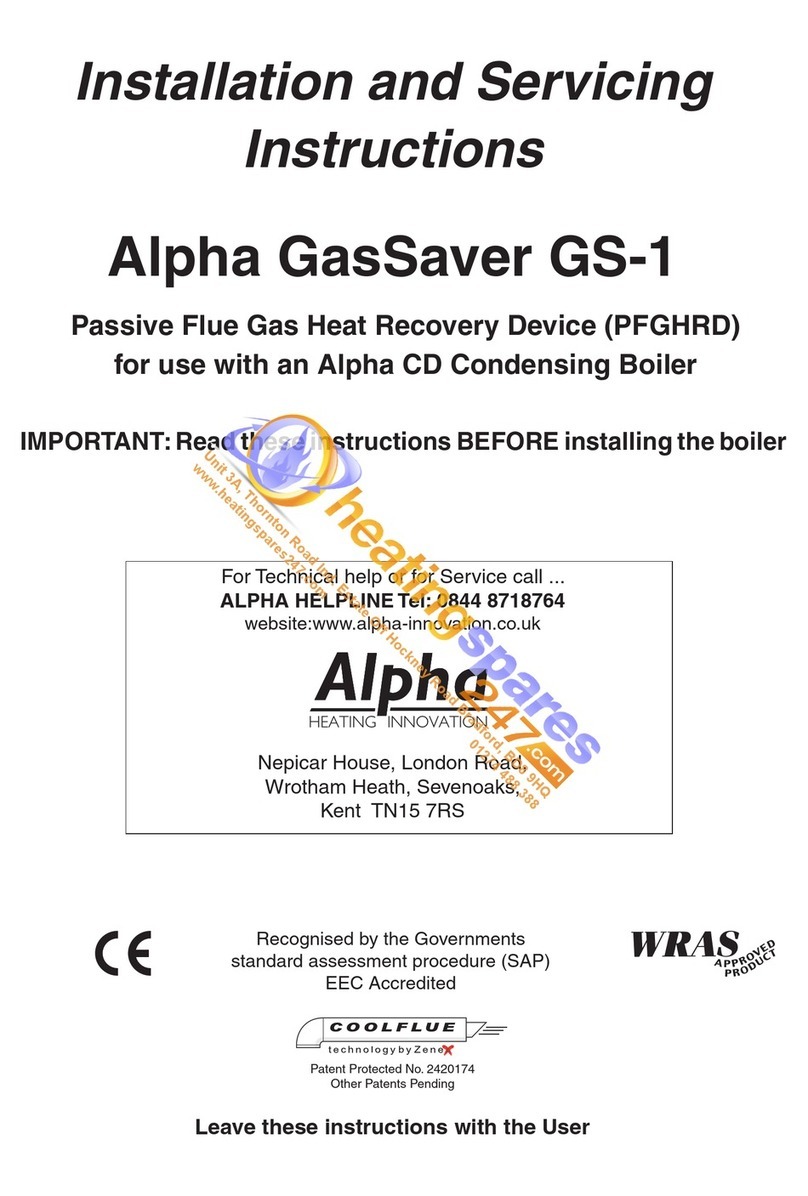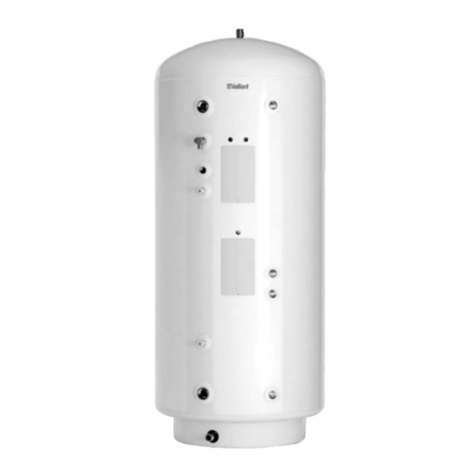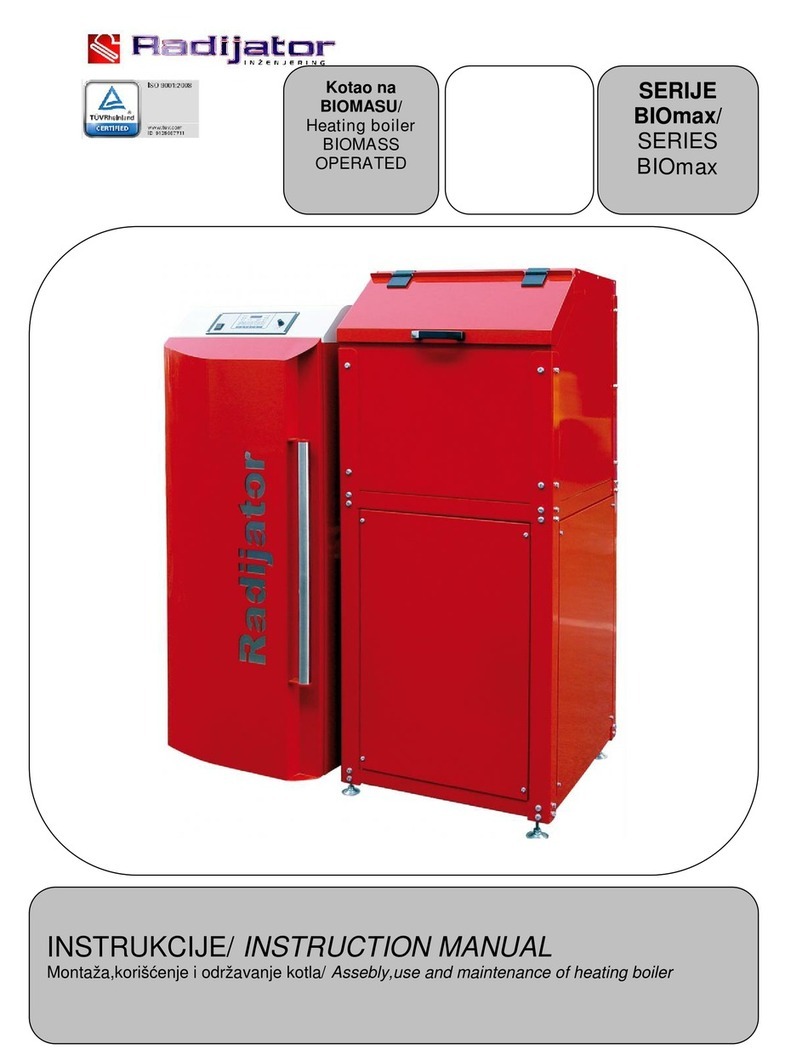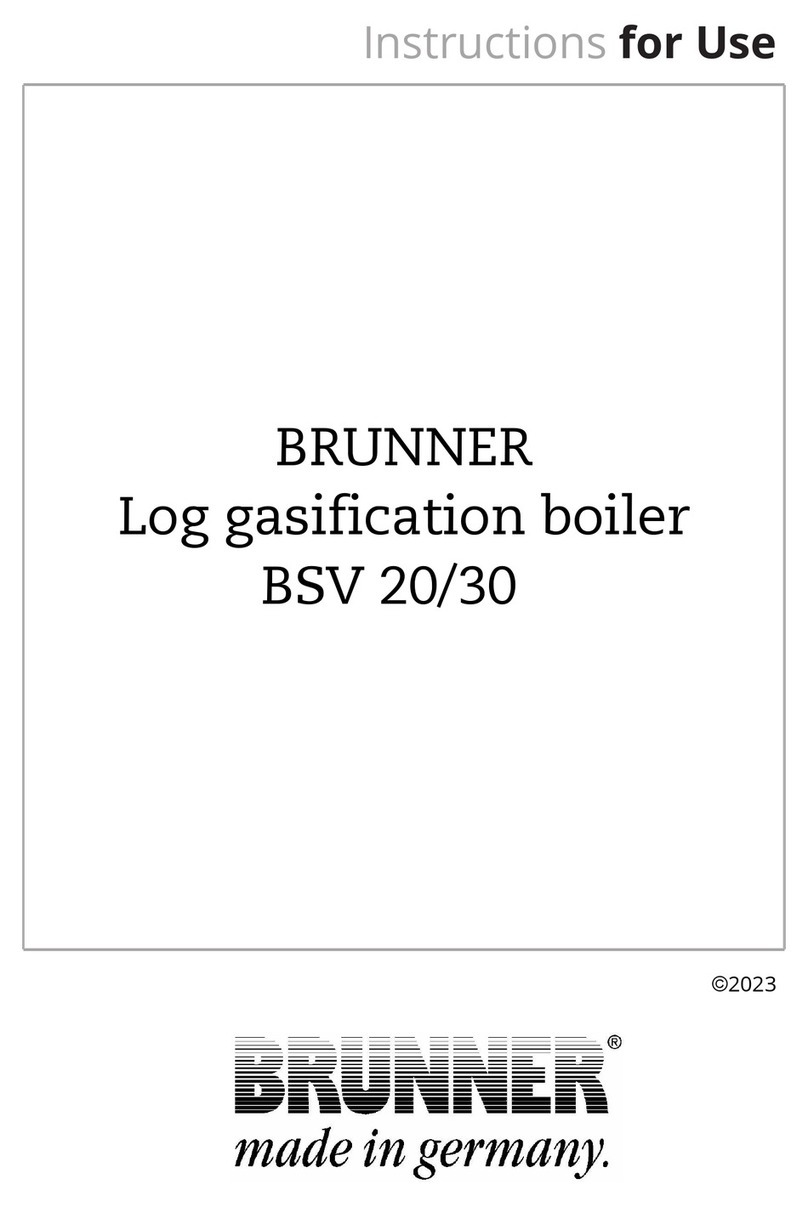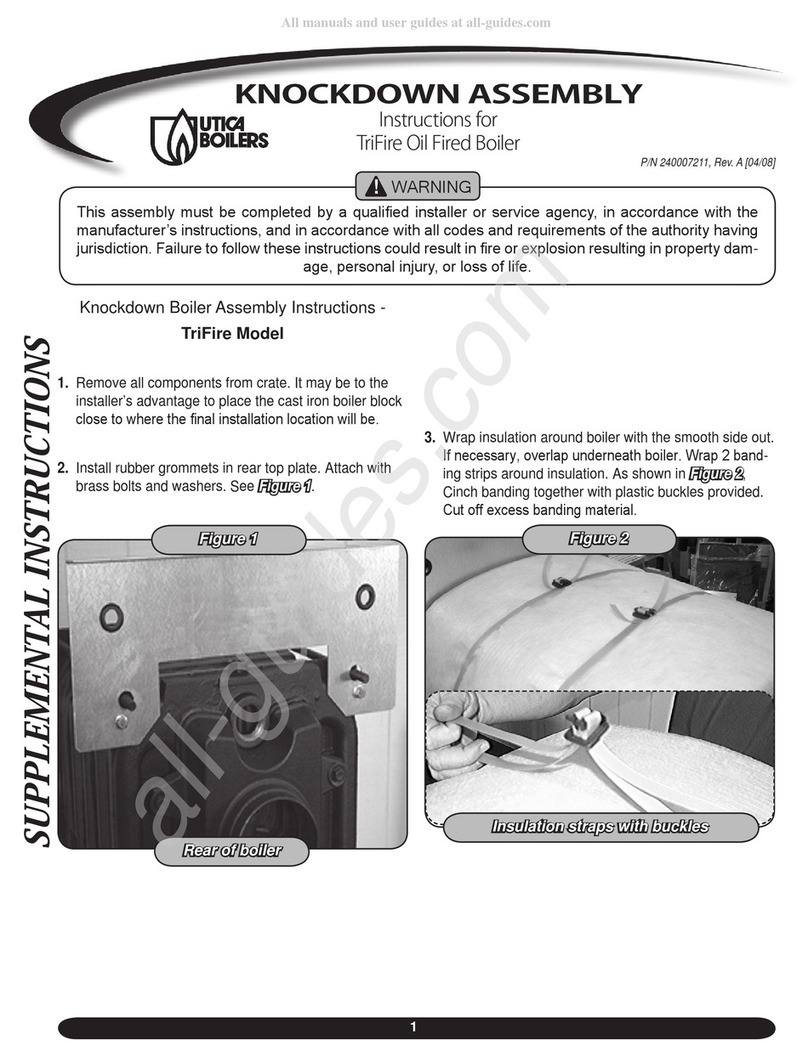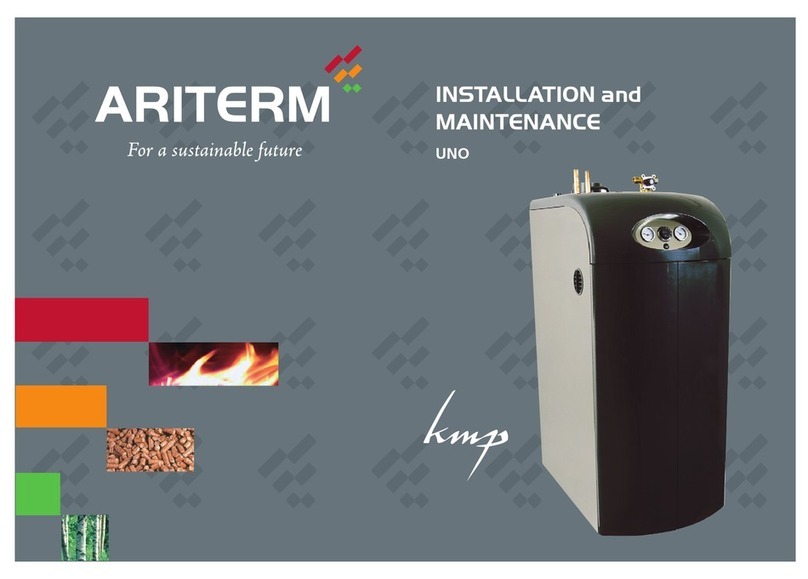ARITERM SWEDEN AB Installation, Operation and Maintenance - 2007.10.26- 8/12
A fine filter has already been fitted in the cold water line to the plate heat exchanger.
is filter serves to prevent the heat exchanger from becoming clogged. ere is no
need for a safety valve, the heat exchanger volume being less than 2 litre. According to
current regulations, the mixing valve or any equivalent device shall limit the leaving
hot water temperature to a maximum of 65 °C.
Fit the flow switch onto the leaving hot water pipe. It should be placed in the upright
position (vertically) so that the arrow on the black portion of the sensor points
upwards. is means that the arrow shall point in the direction of the flow. Install the
sensor as close to the boiler as possible as the sensor cable must reach down to the
electric connections of the control system. Do not install the flow switch horizontally.
Safety valve and circulation pump
If a closed expansion vessel has been installed in the radiator system, the safety valve
must be checked 4 times a year. Activate the valve by pressing or turning the control
button and check that water escapes from the overflow pipe connecting the valve to the
drain. If the boiler has been out of service for a period of time, the circulation pump
might jam. is is normal. e easiest remedy is to unscrew the air screw and turn the
motor shaft with a screwdriver.
Planning and installation work
Planning and installation shall be carried out in a professional manner , attention
being paid to general and local rules and regulations. Operating pressure is max. 1,5
bar. Before taking the installation into service, and always at the beginning of the
heating season, the following inspection shall be carried out:
• check that the heating system is filled and bled
• check that the circulation pump is working
• check that the system valves are open
• check that the automatic control and safety devices, if any, are in working order
• check that the chimney has the necessary draught and that the fresh air ventilation is
open.
WATER PIPING FILLING OF WATER
Before you begin heating, the heating system must be filled with water.
To fill the system, do as follows:
1 Open all shut-off valves, including the shunt valve.
e pump must be switched off.
2 Fill the boiler and the radiator system with water.
Bleed the system at the radiators.
3 Once the system is filled completely, the circulation pump can be started and
heating can begin.
4 When the boiler water has reached its pre-set operating temperature, the pump
should be stopped and the system bled at the radiators once again. is should be
repeated several times.
Remember that much air is enclosed in tap water. e enclosed air volume may reach
as much as 10%, which explains why bleeding takes time – especially where there are
large water volumes. A closed system shall be filled until the pressure gauge indicates
the correct system pressure, i.e. the distance from the pressure gauge to the highest
radiator in meter times 0,1 which gives the system pressure in bar. Adjust the red
needle of the pressure gauge to the same value as the big needle. e desired hot water
temperature value is selected by means of the mixing valve. To save energy, select the
lowest acceptable temperature.
Heating with electric heating element
Ariterm Biomatic 20 has been fitted with a factory wired 3-phase 6 kW electric
heating element. When the electric heater is used for backup purposes, the thermostat
of the heater should be set at 50 °C to prevent it from being turned on unnecessarily.
e operation indicator is lit when the electric heating element is in service.
